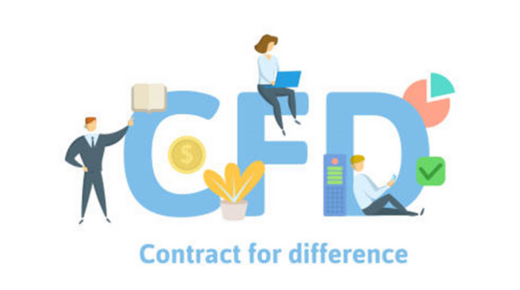
In the realm of Forex trading, the foreign exchange market presents a broad and constantly fluctuating terrain. One tool that has gained significant traction among traders is CFD trading. CFDs, or Contracts for Difference, offer a unique way to speculate on the price movements of various financial instruments without actually owning the underlying asset. This article will take a closer look at the role of CFD in Forex trading, exploring their advantages, potential pitfalls, and how they can be a game-changer for both novice and experienced traders alike.
Understanding CFDs in Forex Trading
To grasp the role of CFDs in Forex, it’s essential to understand what they are. A CFD is a financial derivative that allows traders to bet on the price movement of an asset, such as a currency pair, without having to buy the asset itself. Instead, traders speculate on the difference in price between the opening and closing of their position. This means that if a trader believes a currency pair will rise in value, they can enter a ‘buy’ CFD; if they think it will fall, they can enter a ‘sell’ CFD. The profit or loss is determined by the size of the price movement and the leverage applied.
Leverage: A Double-Edged Sword
One of the most attractive features of CFD trading is the use of leverage. Leverage allows traders to control a larger position in the market with a smaller amount of capital. This can amplify both gains and losses, making CFD trading potentially very profitable, but also very risky. It’s crucial for traders to understand the implications of using leverage and to manage their risk appropriately.
Market Access and Liquidity
CFDs provide traders with access to a wide range of markets, including Forex, indices, commodities, and stocks. This versatility is one of the key benefits of CFD trading. Additionally, the Forex market itself is known for its high liquidity, which means that trades can be executed quickly and at the desired price, reducing the risk of slippage.
Strategic Trading with CFDs
Strategically, CFDs can be used in various ways. Traders can use them to hedge their positions, speculate on market trends, or even to take advantage of short selling opportunities. The flexibility of CFDs allows for a multitude of trading strategies, catering to different risk appetites and market outlooks.
Risk Management in CFD Trading
While the potential for high returns is a significant draw, the risks associated with CFD trading should not be underestimated. It’s vital for traders to implement robust risk management strategies. This includes setting stop-loss orders, understanding margin requirements, and being aware of the potential for rapid market movements that can lead to significant losses.
Regulation and Broker Selection
Choosing a regulated broker is crucial when it comes to CFD trading. Regulation provides a layer of protection for traders and ensures that the broker operates within a legal framework. It’s also important to consider the broker’s reputation, the tools and resources they offer, and the quality of their customer service.
The Future of CFD Trading in Forex
As technology continues to evolve, so too does the world of CFD trading. We can expect to see more advanced trading platforms, better educational resources, and potentially new regulations that will shape the future of CFD trading in Forex. The key for traders will be to stay informed and adapt to these changes to maximize their trading potential.
In conclusion, CFD trading offers a dynamic and flexible way to participate in the Forex market. It allows traders to speculate on price movements with leverage, access a wide range of markets, and employ various trading strategies. However, it’s important to approach CFD trading with a clear understanding of the risks involved and to practice sound risk management. As the Forex market continues to grow and evolve, CFDs are likely to remain a popular choice for traders looking to capitalize on market opportunities.
